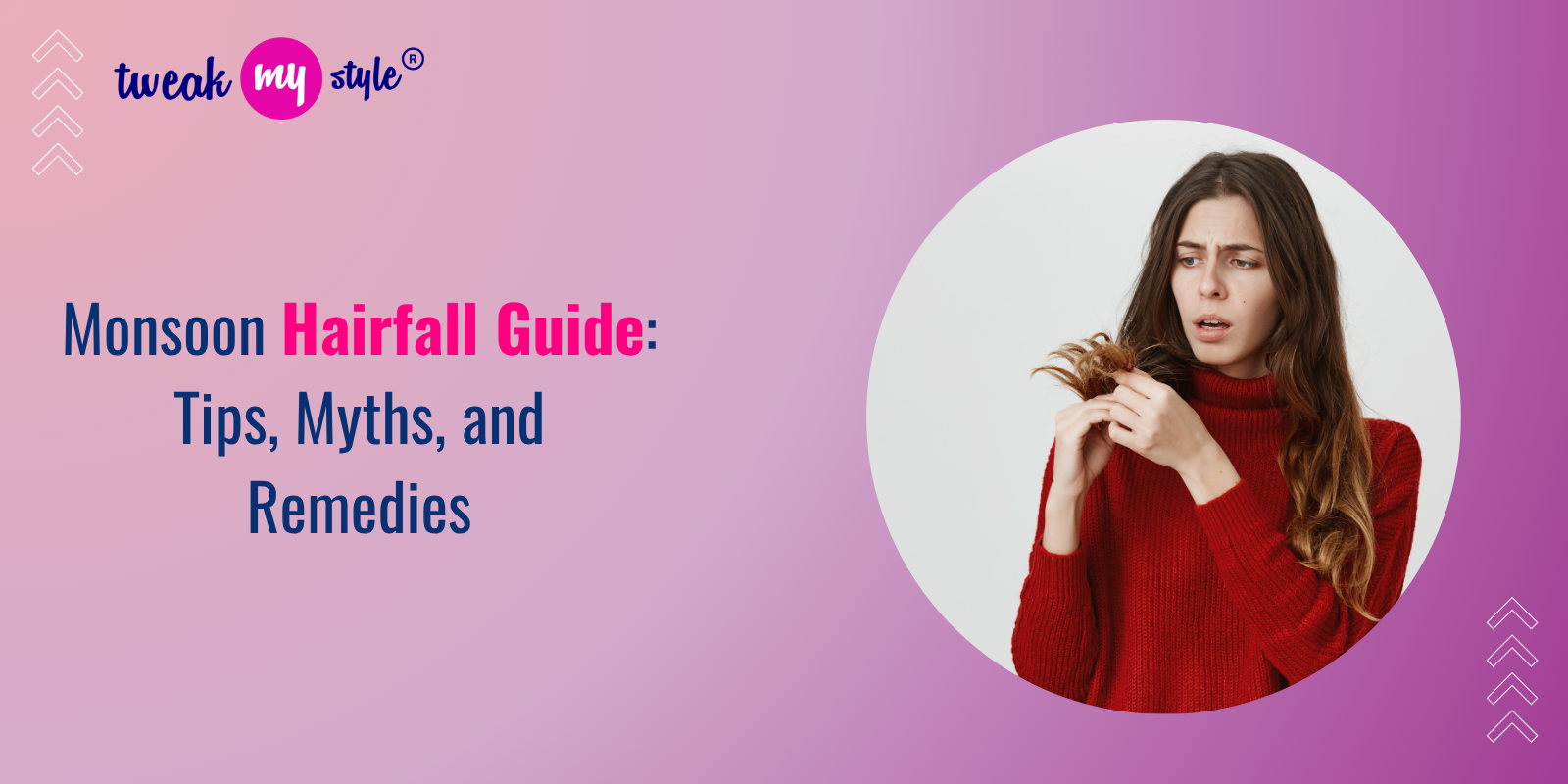Monsoons bring relief from the scorching summer heat, but along with the pleasant rains comes an unwelcome guest—hairfall. The increased humidity, rainwater exposure, and scalp infections during the monsoon can weaken your hair, causing breakage, dandruff, and noticeable hair loss. But don’t worry! With the right care and information, you can keep your locks healthy and strong all season long.
In this Monsoon Hairfall Guide, we’ll explore practical tips, bust common myths, and share home remedies to control hairfall during the rainy season.
Why Does Hairfall Increase During Monsoon?
Hairfall during the monsoon is a real phenomenon, and here’s why it happens:
High Humidity: The moisture in the air weakens hair roots, making strands brittle and prone to falling.
Rainwater Exposure: Rainwater may seem harmless, but it can contain pollutants that irritate the scalp and damage hair.
Fungal Infections: A damp scalp is the perfect environment for fungal growth, leading to dandruff and itchiness.
Sweating and Greasiness: Sweat mixed with dirt and oil clogs follicles, reducing scalp health.
Monsoon Haircare Tips
1. Keep Your Scalp Clean and Dry
Wash your hair regularly (2–3 times a week) with a gentle, sulfate-free shampoo to remove dirt, sweat, and rainwater residue. Make sure to dry your scalp thoroughly to avoid fungal infections.
2. Use a Microfiber Towel
After washing, gently pat your hair with a microfiber towel. It reduces frizz and breakage compared to rough cotton towels.
3. Oil Wisely
Oiling is beneficial but avoid leaving oil in your hair for too long during the monsoon. A 30-minute oil massage before a wash improves blood circulation without making the scalp too greasy.
4. Avoid Heat Styling
Your hair is already stressed by the weather—don’t add more damage through curling irons or straighteners. Let your hair air-dry naturally whenever possible.
5. Use a Wide-Toothed Comb
Wet hair is fragile. Always use a wide-toothed comb to detangle and avoid unnecessary breakage.
Debunking Common Hairfall Myths
❌ Myth 1: Rainwater is good for your hair.
Truth: Today’s rainwater contains pollutants and acidic components that can harm your scalp and hair health.
❌ Myth 2: You should shampoo every day during monsoon.
Truth: Over-washing strips your scalp of natural oils. Stick to 2–3 times a week unless your scalp is excessively oily.
❌ Myth 3: Hairfall during monsoon is permanent.
Truth: Monsoon hairfall is seasonal and usually reversible with proper care and diet.
Home Remedies to Control Hairfall
🍋 Lemon and Coconut Oil
Mix a tablespoon of lemon juice with two tablespoons of warm coconut oil. Massage into the scalp and leave it for 30 minutes before washing. This helps fight dandruff and strengthens roots.
🍵 Green Tea Rinse
Green tea is rich in antioxidants that promote hair growth. Brew a strong cup, let it cool, and use it as a final rinse after shampooing.
🥚 Egg Mask
Whisk one egg with a tablespoon of olive oil. Apply to your scalp and hair, leave for 20 minutes, and wash with a mild shampoo. It nourishes and adds protein to weak strands.
Eat Right for Healthy Hair
Your hair’s strength comes from within. Include these in your monsoon diet:
Protein: Eggs, paneer, lentils
Iron & Zinc: Spinach, pumpkin seeds, whole grains
Vitamin C: Oranges, berries, amla
Omega-3 Fatty Acids: Walnuts, flaxseeds
Drink plenty of water and avoid excessive caffeine and junk food.
Final Thoughts
Hairfall in the monsoon is common, but not uncontrollable. With the right haircare routine, a balanced diet, and a few natural remedies, you can minimize hairfall and maintain strong, shiny locks throughout the season.
Remember, a little extra love goes a long way when it comes to your hair—especially during the rains!















Share this post on: